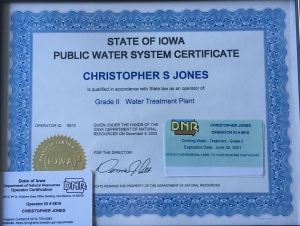I’ve said in the past that hatching writable ideas can be very difficult. There are many days when I feel like this thing has run its course. But, it seems like somebody always bails me out eventually by knowingly or unknowingly giving me an idea. University of Iowa tough guy Jeren Glosser did this a while back.
This week, not just one but two hanging curve balls were tossed my way via a certain Iowa financial institution. [Full disclosure here: I was a member of this institution for many years until they decided they wanted to look at some of my emails by way of the Freedom of Information Act. The thought occurred to me then that there might be other options for my insurance needs. Sadly, I no longer get reduced-price Iowa State Fair tickets with my new provider, but the upside is they don’t seem to care about my emails, at least not yet anyway].
I’m not going to swing at these hanging curves in the order they were tossed. The number 10,000 figures prominently in both.
The second curveball was a story about Iowa drinking water. It stated that Iowa DNR reported “No waterborne diseases or deaths were reported from Iowa public water supply systems (PWS) in 2018,” and that this has been true since 1996. I just want to say “CONGRATULATIONS!” to every certified and licensed Iowa water treatment plant operator, of which I am one (Operator ID # 6816). The work that these folks do to take water from Iowa’s streams, lakes and aquifers and transform it into something safe to drink is a Herculean feat and truly one of the miracles of modern engineering.
I would also say HOORAY for regulation. The Safe Drinking Water Act (SDWA), passed by Congress in 1974, compels public water supplies to conduct various treatment processes and adhere to compliance standards and is one of the main reasons why most of us have safe water to drink. The difference in quality between the water entering and exiting a water treatment plant is probably greater here in Iowa than almost anywhere else in the country.
As to the superb job our water treatment operators do, let’s drill down a little bit and take a look at nitrate. About 260 of Iowa’s 880 public water supplies have been identified as highly susceptible to nitrate contamination (levels are greater than half the maximum allowable limit) and about 50 or so must conduct treatment or blending at customer expense to reduce nitrate to drinkable levels. This treatment is necessary for about 25% of our state’s population.

Alas, about 300,000 Iowans are not served by municipal supplies and drink water from unregulated private wells. Many private wells are never tested, but of those that have been analyzed, 12% tested above the safe level for nitrate and 40% tested positive for coliform bacteria over the last 16 years. About 4300 of these wells tested positive for bacteria every time they were tested. Would you let your children drink untested water from a private rural Iowa well? I wouldn’t.
Bizarrely, this statement made it into the drinking water article: “it’s important to note 10,000 pounds of nitrogen exist naturally in every acre of Iowa’s soils, and farmers only apply about 150 pounds of nitrogen per acre for corn” (my emphasis). Just about every word of this is inaccurate. But unlike the propaganda business, the science business requires documentation, so I’ll give you some.
Some Iowa soils do indeed contain 10,000 pounds of nitrogen, and some even a lot more than that. But it’s not hard to find many that contain far less. For example, Iowa Geological Survey soil scientist Matthew Streeter published a paper (1) showing about 2200 pounds of nitrogen per acre in the Rapid Creek watershed of Eastern Iowa, which is probably typical of many soils in the southern half of the state. The other thing about this, ahem, “natural” nitrogen they don’t tell you: soil nitrogen stocks positively correlate with nitrogen fertilizer inputs (2). Furthermore, “Crop residues are the source of soil organic matter including organic nitrogen (2).”
Rather than dive further into the weeds, I am willing to concede the point that Iowa soils contain a lot of nitrogen before we apply any fertilizer or manure. It’s undeniable. I also think it would be swell for somebody to explain to lay people why our streams contain ten times as much nitrate now than before we started farming, and since the industry won't tell you, that’s what I try to do with some of my essays. To that end, let’s look at the second part of the aforementioned sentence: “farmers only apply about 150 pounds of nitrogen per acre for corn.” This is complete hogwash and everybody in the industry knows it. Just ask them. The Iowa Nutrient Research and Education Council, of which a certain financial institution is a part, reports 169 pounds per acre applied to corn grown following soybeans and 200 pounds per acre applied to corn after corn. Why is it so hard to just own up to what is going on?
Now to hanging curveball number one. This was a podcast interview with Dr. Manure. As to that Nom De Plume, it reminds of me of when I lived in Montana where I always wondered why anybody would want to self-apply the word “dude” to their persona, a la about 104 undergraduate men at the University of Iowa and Jeff Bridges in The Big Lebowski. (Go to the link, you'll laugh).
Anyway, 104 (I’m boycotting the long form numeral from here on) came up again in the podcast, i.e. Iowa soils have 104 pounds of native nitrogen. What is going on here, why this fixation on 10k? Admittedly, it is a nice round number, it sounds big, and it's easy to remember. Hmm, maybe I just answered my own question.
For long a while I used to think that it was a textbook red herring used to distract our attention from the real driver of stream nitrate and phosphorus pollution: the artificially-drained corn-soybean system that that receives nutrient inputs well beyond what is removed in the grain. In other words, I thought it was rhetorical tool used to excuse the present condition of our lakes and streams. I’m not so sure about that anymore.
I now think the answer to the $104 question, like so many other things in our present society, lies buried within the words of George Orwell: “If you want to keep a secret, you must also hide it from yourself.”

- Streeter, M.T., Schilling, K.E. and Wolter, C.F., 2018. Sediment delivery and nutrient export as indicators of soil sustainability in an Iowa agricultural watershed. Journal of soils and sediments, 18(4), pp.1756-1766
- Christianson, L., Castellano, M. and Helmers, M., 2012. Nitrogen and phosphorus balances in Iowa cropping systems: sustaining Iowa’s soil resource. A report to the Iowa legislature.